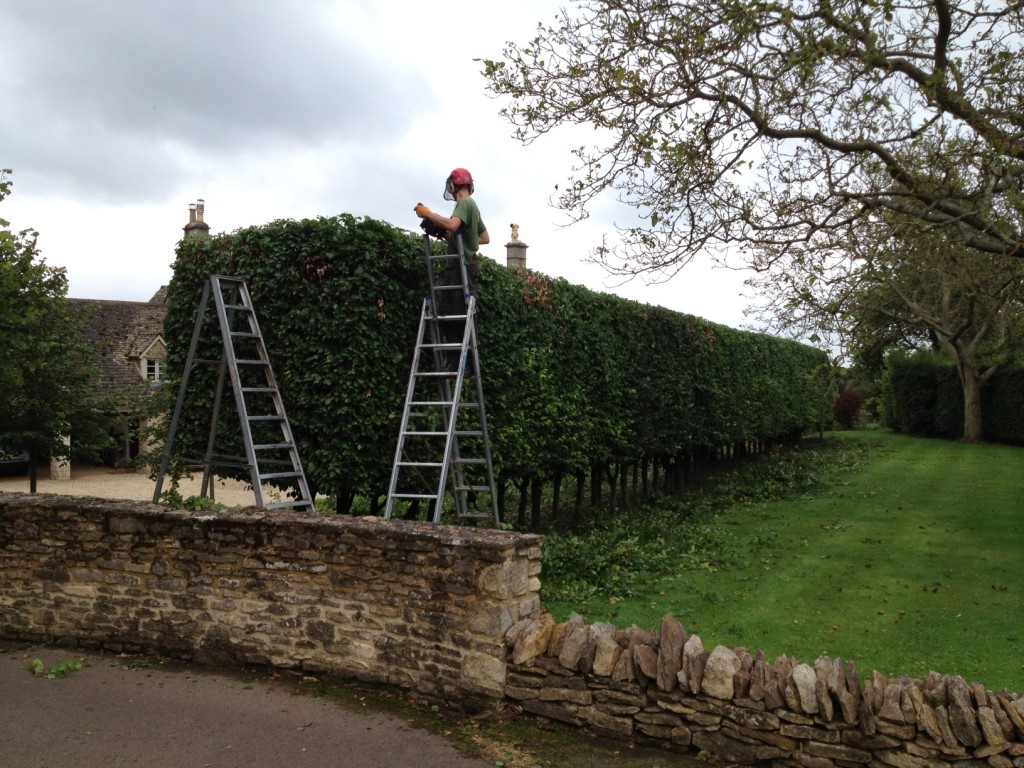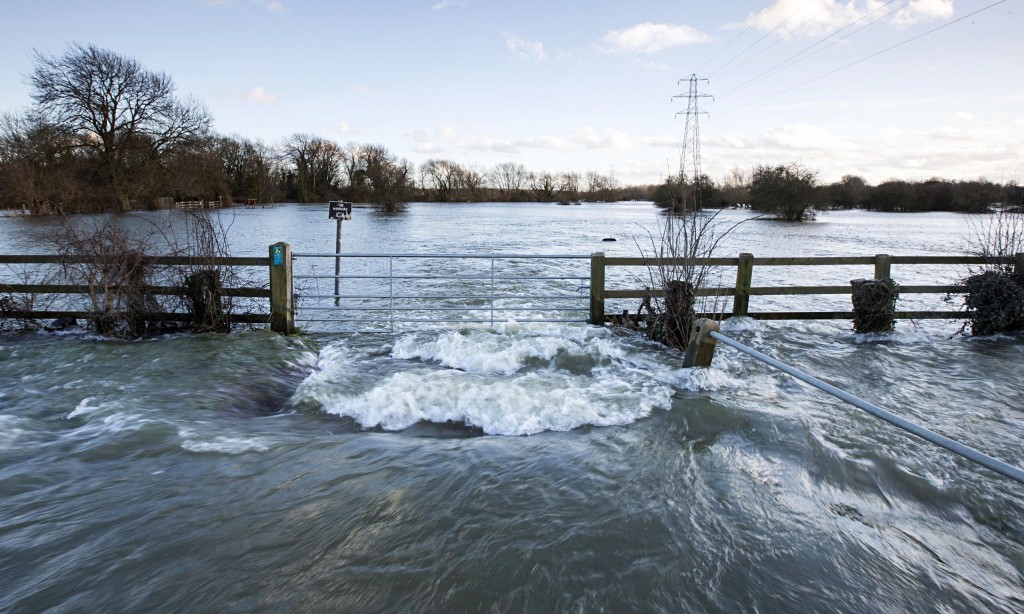There are many species of tree that can be grown to make suitable hedges, but probably the most common ones we come across (in no particular order) are:
- Yew,
- Beech,
- Hornbeam,
- Hawthorn,
- Laurel,
- Holly,
- Pyracantha,
- Berberis,
- Thuja (Western Red Cedar),
- Leyland Cypress,
- Lawson Cypress,
- Castlewellan (Golden Laylandii)
- and mixed species hedges.
Late summer through to autumn is when we carry out most of our hedge trimming and restoration but it can be done at other times. This is because the hedges have generally put on most of the growth they are going to for the year and that means they will be left tidy for the winter and not noticeably re-grow again until spring. Also, by working at this time of year the risks of active bird nests in spring and early summer and the frosts of winter are generally avoided.
However, hedges that require very severe restoration, involving either cutting back one of the sides to the main stems or cutting down to near ground level tend to be best cut in very early spring. This is when the trees are about to put their energy into producing new growth and will have a full growing season to toughen up the young shoots before the frosts of the winter. The window of opportunity for this type of work is short, as it has to happen before bird nesting begins.

Obtaining a level top requires some skill
The majority of hedges we work on only require trimming. This is usually an annual job and involves removal of one season’s growth. Hedges that are trimmed annually produce the best result in appearance with a neat tidy finish. They also don’t tend to get too large and are much easier to maintain than if left for years untouched. It’s quite surprising though just how much debris we remove from even a small hedge when carrying out an annual trim. The issue of debris and what to do with it is sometimes the deciding factor for a client to call us in the first place! Taking it away in our trucks saves endless journeys to the local tip with it stuffed into the car boot.
We get called out every year to deal with hedges that have been left alone for several years and their owners have lost light and space from their gardens as a result. In some cases the only answer is to fell it and start again by planting a new hedge, but in many cases we can actually restore the hedge to a more suitable size by cutting back hard. This does need to be carefully planed and sometimes done in stages over a few growing seasons. But hedges such as Yew, Thuja, Beech, Hornbeam and Laurel recover well and often much faster than a newly planted hedge would be able to become established.
It is worth noting that not all species will sprout from bare wood, meaning they only produce new growth from existing live foliage, so therefore it is important to know what you are doing. For example, trimming back or cutting the side of a Lawson Cypress hedge beyond the extent of the live growth, could spell disaster!
Hedges that are regularly trimmed have quite a definite point to trim to, particularly on the top, because the trimming actually encourages the hedge to thicken. But when we have to reduce the height of a hedge beyond this point we need to create a new level to work to.

Newly trimmed Beech hedge
We are often asked how we obtain a straight level top without a string line or a means of measuring. In fact, measuring or following a line can be harder than working by eye. However flat a garden, the ground nearly always undulates and this makes measuring from the floor very difficult.
When reducing the height of a hedge we take a point about either half way along its length, or the most prominent point to where the eye is drawn and here we mark the new height. From this new height mark we work along the hedge, cutting so that the hedge looks level from wherever in the garden or house it will be most viewed. This means that if measured, the hedge may indeed vary in height from one end to the other but it will appear level to the eye. A hedge cut strictly to a fixed level will more often than not appear like it slopes or is uneven. Allowances have to be made for hedges that are not planted parallel to a point from which they are most viewed from. Even if the top is level, the section of hedge closer to the viewing point will appear to be higher than the section that is further back. Therefore to obtain an even level to the eye a variation in the actual level of the top is needed. It’s a lot to think about isn’t it!
The tools we use for working on hedges are
- Hedge Trimmers (for removing or shortening either one or two season’s growth),
- Chainsaws (for cutting down the main stems or removing side branches),
- Loppers and hand saws (for removing growths too large for a Trimmer and too small to bother with a Chainsaw) and
- Secateurs (for fine pruning).
- For reaching high up the sides of a hedge we use step ladders and extendable ladders or a Long Pole Hedge Trimmer.
- When climbing the main stems to trim wide tops or to reduce the height a safety harness is often worn to prevent a fall.
- On some hedges a Mobile Elevated Access Platform (MEWP), otherwise know as a Cherry Picker is used.
If your hedge requires expert attention, please do give us a call. We’ll be happy to advise you on the best course of action and to provide a free quotation. After all – it’s what we do! For absolutely anything related to tree report, tree surgery just visit www.treemaintenance.co.uk








